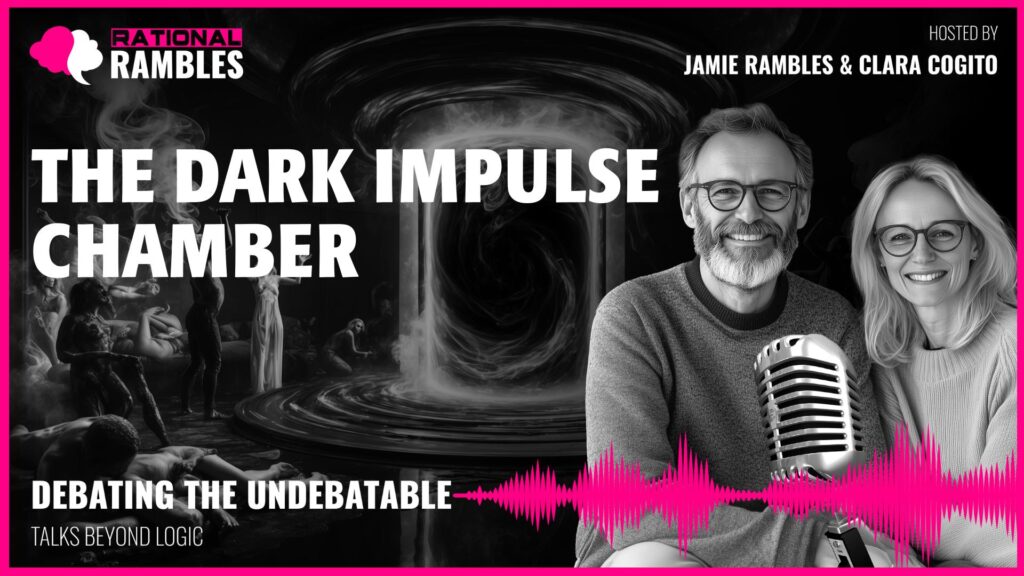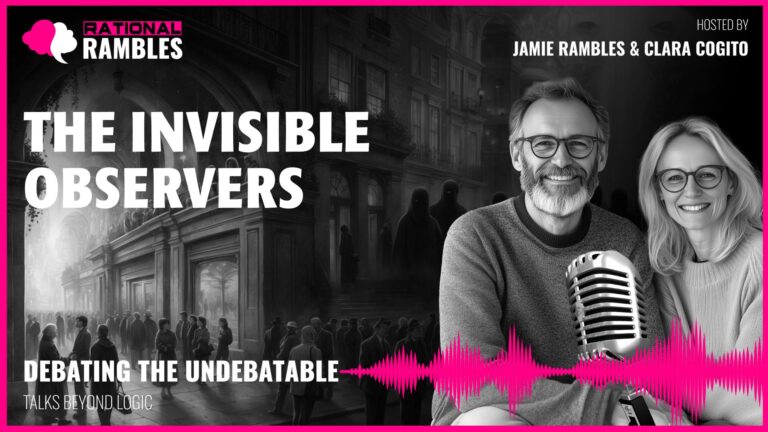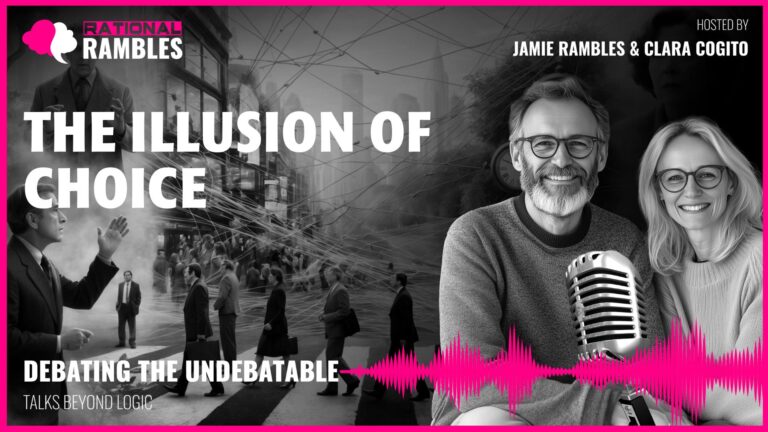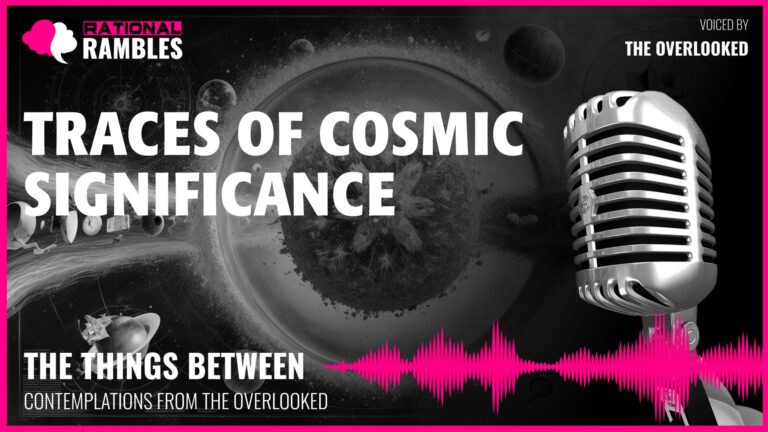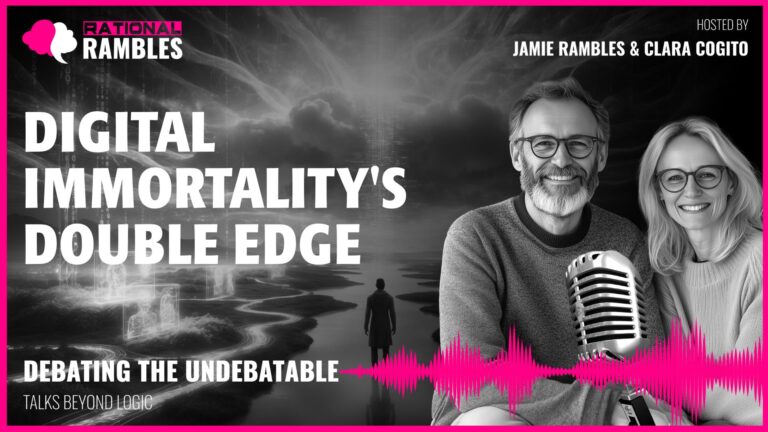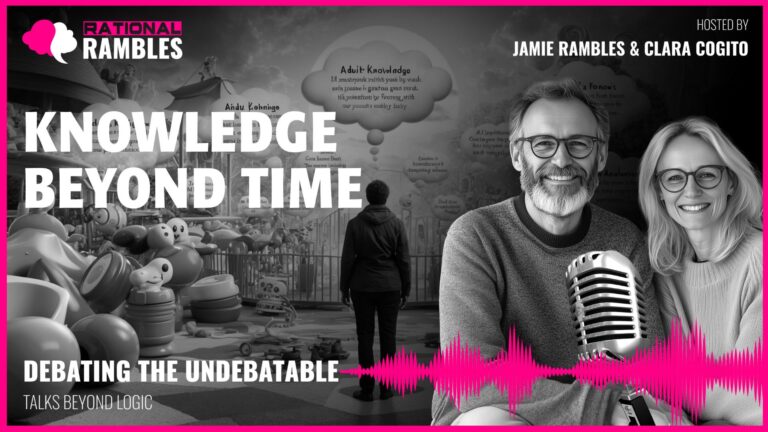The Dark Impulse Chamber: Philosophical and Psychological Implications of Virtual Transgression
Introduction: The Ethics of Consequence-Free Action
Imagine a technology so advanced that it allows individuals to indulge their darkest impulses—violence, cruelty, or any forbidden desire—without causing any real-world harm. This hypothetical “Dark Impulse Chamber” represents a profound thought experiment at the intersection of ethics, psychology, technology, and human nature. As virtual reality technologies advance, this once purely theoretical scenario inches closer to potential reality, raising urgent questions about how we should navigate the thin boundary between virtual action and moral responsibility.
The concept evokes ancient philosophical paradoxes such as Plato’s Ring of Gyges, which asked whether anyone would remain just if they could act without consequences. Yet it also engages thoroughly modern concerns about behavioral psychology, neurological reinforcement, digital ethics, and the reconfiguration of moral boundaries in technological societies. This exploration delves into these multifaceted dimensions, examining whether such a chamber would serve as a beneficial pressure valve for dark human impulses or a dangerous training ground that reinforces our worst tendencies.
At its core, this thought experiment challenges us to consider fundamental questions: What constrains harmful behavior—merely external consequences or intrinsic moral values? Does the simulation of harmful acts, even without tangible victims, constitute a form of moral harm in itself? How might engaging in consequence-free transgression reshape our moral character? And ultimately, what responsibilities do we bear in creating technologies that could amplify either our capacity for cruelty or our potential for compassion?
The Catharsis Hypothesis vs. Behavioral Reinforcement
The notion that a consequence-free virtual space might serve as a healthy outlet for dark impulses draws from the ancient concept of catharsis. Aristotle first proposed this idea in relation to Greek tragedy, suggesting that witnessing dramatic portrayals of suffering could purge viewers of negative emotions. Applied to our thought experiment, the catharsis hypothesis would argue that allowing people to express forbidden desires virtually might reduce their need to act on these impulses in reality—functioning as a kind of psychological pressure valve for humanity’s darker inclinations.
Ancient Roots of the Catharsis Theory
Aristotle’s original conception of catharsis emerged from his analysis of Greek tragedy in Poetics, where he observed that audiences experiencing pity and fear through dramatic portrayal seemed to achieve a form of emotional purification. In his view, tragedy allowed spectators to process powerful negative emotions safely, suggesting that expressing or experiencing emotions in controlled contexts might diminish their disruptive power in everyday life.
This intuitive idea has maintained remarkable cultural persistence, appearing in various forms throughout history—from ritualized carnivalesque celebrations that temporarily suspended social norms to modern arguments that violent video games provide healthy outlets for aggression. The underlying assumption remains consistent: controlled expression of forbidden impulses prevents more dangerous manifestations.
Modern Skepticism: Behavioral Learning Perspectives
However, contemporary psychological research has largely moved away from the simple catharsis model. Studies on aggression consistently suggest that “blowing off steam” through aggressive acts does not reliably reduce subsequent aggression—and may actually prime individuals for more aggressive behavior. This contradicts the intuitive pressure valve theory in favor of a behavioral learning perspective: repeatedly performing an action, even virtually, strengthens rather than weakens the neural pathways associated with that behavior.
Behavioral psychologists point to several key mechanisms that challenge the catharsis hypothesis. First, behavioral reinforcement suggests that any activity producing pleasure or satisfaction tends to be repeated and strengthened. If virtual transgression provides enjoyment, satisfaction, or emotional reward, users may develop stronger associations between those actions and positive feelings. Second, habituation suggests that repeated exposure to any stimulus diminishes its psychological impact over time. This could potentially lead users to escalate their virtual behaviors to maintain the same level of excitement or satisfaction—a concerning potential pathway.
Additionally, modern neuroscience reveals that practicing any behavior—physically or mentally—strengthens the neural circuits associated with that behavior. Brain imaging studies demonstrate that even imagining performing an action activates many of the same neural pathways as actually performing it. This suggests that repeatedly engaging in virtual harmful acts might strengthen, rather than discharge, the neural foundations for those behavioral tendencies.
The Category Error in Modern Applications of Catharsis
Applying Aristotle’s concept of catharsis to interactive virtual environments may constitute a fundamental category error. There exists a significant distinction between passively witnessing a dramatic portrayal (as in Greek tragedy) and actively participating in simulated transgression. The former involves observation and emotional processing as a spectator, while the latter involves agency, decision-making, and skill development as a participant. These experiences engage different psychological and neurological processes, with potentially divergent effects on subsequent behavior and moral development.
Research on video games illustrates this distinction. While evidence regarding whether violent games increase real-world aggression remains mixed, meta-analyses suggest at least short-term effects on aggressive thoughts and feelings. What makes the Dark Impulse Chamber potentially more concerning than conventional video games is that it would presumably be designed specifically for consequence-free indulgence in harmful impulses, without the framing of gameplay objectives, narrative contexts, or prosocial elements that characterize most entertainment media.
Moral Character and Virtue Ethics: The Self-Harm Argument
Beyond questions of subsequent behavior lies a more fundamental ethical concern: even if the Dark Impulse Chamber never led to increased real-world harm to others, might it nevertheless constitute a form of harm to one’s own moral character? This perspective draws from virtue ethics traditions that emphasize the development of character through habitual practice.
Aristotelian Virtue Development and the Practice of Vice
For Aristotle and subsequent virtue ethicists, moral character develops through habitual practice—we become courageous by practicing courage, honest by practicing honesty, and compassionate by practicing compassion. By extension, repeatedly practicing cruelty or indifference to suffering, even virtually, might cultivate corresponding character traits. The Dark Impulse Chamber would essentially provide a training ground for vice rather than virtue.
This concern resonates with Kant’s categorical imperative, which directs us to act according to maxims that could become universal law. Even if no one is directly harmed by virtual actions, we might be cultivating character dispositions that would be catastrophic if universalized in real contexts. The moral harm, in this view, is to the agent’s own character—a form of self-corruption that philosophers from Plato onward have recognized as a kind of self-harm potentially worse than physical injury.
Self-Perception Theory and Identity Formation
Modern psychological research lends support to these ancient philosophical concerns. Self-perception theory suggests that we often infer our attitudes, values, and identity from observing our own behavior. Rather than behaviors simply flowing from a fixed identity, our actions actively shape how we understand ourselves. Repeatedly engaging in certain actions, even virtually, could lead individuals to incorporate those tendencies into their self-concept—”I am the kind of person who enjoys causing suffering” might become part of how they understand themselves.
This represents a deeper concern than merely whether virtual actions lead to real ones. It suggests that the boundaries between virtual behavior and personal identity are permeable, with regular engagement in virtual cruelty potentially reshaping moral sensibilities and self-understanding in troubling ways. This transformation of identity might occur gradually, below the threshold of conscious awareness, making it particularly insidious.
Moral Disengagement and Compartmentalization
Albert Bandura’s research on moral disengagement identifies various mechanisms through which humans disconnect their moral standards from their actions—including moral justification, euphemistic labeling, advantageous comparison, and displacement of responsibility. The Dark Impulse Chamber could potentially facilitate a new form of moral disengagement: compartmentalization between virtual and real behavior.
This compartmentalization—”what happens in virtual reality stays in virtual reality”—might initially seem to protect real-world ethics from virtual contamination. However, psychological research suggests that moral boundaries are rarely so neatly maintained. Repeated practice in separating actions from moral consideration in one domain may generalize, making it easier to disengage moral judgment in other contexts. The chamber might thus function as practice not just for specific harmful behaviors but for the meta-skill of moral disengagement itself—the ability to temporarily suspend moral judgment of one’s actions.
The Phenomenology of Virtual Experience
Any assessment of the Dark Impulse Chamber must consider the subjective experience of virtual action and how it differs from—yet increasingly approximates—real experience. The phenomenological gap between virtual and real action raises profound questions about both the potential satisfactions and limitations of virtual transgression.
The Qualitative Difference of Virtual Experience
Virtual experiences, no matter how immersive, differ qualitatively from real ones. Users would always know, at some level, that their actions aren’t “real”—that they are engaging with simulations rather than actual persons. This awareness creates a phenomenological gap that might prevent the full satisfaction of whatever drives dark impulses in the first place. If what motivates harmful behavior is not merely the sensation or visual experience but the knowledge of having affected reality, then a simulation known to be unreal might fail to satisfy the underlying psychological need.
This connects to philosopher Robert Nozick’s famous “experience machine” thought experiment, which proposed a hypothetical device capable of giving users any virtual experience while they float unconscious in a tank. Nozick argued that most people would refuse to enter such a machine permanently, suggesting we value more than just experiences; we value connection to reality itself. Similarly, acting out violence virtually might not satisfy whatever underlying needs drive violence in reality.
The Narrowing Gap Between Virtual and Real Experience
However, as virtual reality technology advances, the phenomenological gap between virtual and real experiences continues to narrow. Modern VR can trigger genuine physiological and emotional responses—fear, excitement, stress, pleasure—that mirror responses to real situations. Research shows that people often respond to virtual threats with real physiological stress responses, including increased heart rate, perspiration, and cortisol release.
This narrowing distinction raises the possibility that sufficiently advanced virtual reality could create experiences so convincing that they trigger essentially the same psychological and neurological responses as reality. If virtual experiences become practically indistinguishable from real ones at the level of subjective experience, the argument that “it’s just virtual” loses much of its force. This technological trajectory suggests that whatever psychological impacts virtual transgression might have, these effects are likely to intensify as technology advances.
Motivation and Satisfaction in Virtual Contexts
Understanding the potential impacts of the Dark Impulse Chamber requires examining what actually motivates harmful behaviors and whether virtual contexts can satisfy these motivations. If harmful impulses are primarily driven by desire for power, control, or dominance over others, then perhaps virtual simulations could provide these psychological rewards. However, if what drives these impulses is more complex—desires for recognition, real-world impact, or transgression of actual rather than virtual taboos—then simulations might fail to satisfy these deeper motivations.
This connects to psychological research on different types of aggression and violence. Instrumental aggression (a means to obtain resources, status, or other rewards) might be partially satisfied in virtual contexts that provide the desired rewards. Reactive aggression (responding to perceived threats or provocations) might similarly find outlet in responsive virtual environments. However, violence motivated by more complex psychological needs—such as establishing real social dominance or transgressing genuine social boundaries—might not find equivalent satisfaction in virtual contexts explicitly understood as artificial.
Selection Effects and User Populations
An essential consideration in evaluating the Dark Impulse Chamber is who would use such technology and how their pre-existing characteristics might interact with virtual transgression experiences. Rather than assuming random distribution of users across the population, realistic assessment requires acknowledging potential selection effects in who might be drawn to such technology.
Attraction Based on Pre-existing Tendencies
Those most drawn to a virtual space for acting out dark impulses might be precisely those already struggling with antisocial tendencies, impulse control, or unhealthy fascination with violence. This selection effect would significantly undermine the catharsis argument, as the primary user population might be those at higher existing risk for real-world transgressions. Rather than serving as a pressure valve for the general population, the chamber might primarily attract and potentially influence those already predisposed toward harmful behavior.
This connects to research on violent media consumption that suggests individuals with certain pre-existing aggressive tendencies may be more drawn to violent content in the first place. These selection effects create challenging methodological problems for research, as correlations between virtual violence and real aggression might reflect pre-existing dispositions rather than causal influence. However, even accounting for these selection effects, the concern remains that virtual transgression might have different—and potentially more harmful—effects on precisely those individuals already at higher risk.
Habituation and Escalation Dynamics
The psychological phenomenon of habituation—the tendency for repeated exposure to any stimulus to diminish its emotional impact over time—raises concerns about potential escalation of virtual behaviors. As users become desensitized to initial levels of virtual transgression, they might seek increasingly extreme scenarios to maintain the same level of psychological impact, potentially creating a troubling trajectory of escalation.
This parallels concerns about escalation in pornography consumption, where research suggests some users progressively seek more extreme content as they become desensitized to material that once produced strong responses. The Dark Impulse Chamber might create similar dynamics, where initial forays into virtual transgression gradually lose their psychological impact, potentially driving users toward increasingly disturbing virtual scenarios—or worse, leaving them unsatisfied with virtual experiences entirely.
Developmental Considerations
Age and developmental stage would likely mediate the impact of virtual transgression. The prefrontal cortex, which governs impulse control and moral reasoning, doesn’t fully mature until the mid-twenties. Repeated exposure to consequence-free transgression during formative developmental periods could potentially disrupt normal moral development processes, particularly in adolescents already navigating identity formation and moral boundary-setting.
This developmental concern recalls Plato’s worries about poetry corrupting youth, though his concerns addressed mere representations rather than interactive experiences. Modern developmental psychology suggests that adolescents may be particularly vulnerable to the effects of virtual environments on identity formation and moral development, as they actively construct their understanding of themselves and appropriate social behavior. This suggests that if such technology were ever developed, age restrictions would be a minimum necessary (though not sufficient) safeguard.
Research Challenges and the Collingridge Dilemma
Addressing the potential impacts of the Dark Impulse Chamber presents profound methodological challenges for research and policy. How can we ethically study something that doesn’t yet exist but might soon be possible? This situation exemplifies what philosopher David Collingridge identified as a fundamental dilemma in technological assessment.
The Dilemma of Technological Assessment
The Collingridge dilemma highlights a fundamental challenge in technological ethics: early in a technology’s development, we lack sufficient information about its impacts to regulate effectively, but by the time we fully understand its effects, the technology is often too entrenched to control or redirect. This creates a narrow window for informed intervention that is often missed.
With something like the Dark Impulse Chamber, we cannot simply release such technology into society and observe the results—that would constitute reckless experimentation on public well-being. Yet without empirical data specific to this technology, we’re left extrapolating from related but distinct research on media effects, gaming, and therapeutic VR—extrapolations that might miss crucial distinctions in this novel context.
Ethical Research Approaches
Addressing this dilemma requires creative approaches to research that balance empirical rigor with ethical safeguards. One approach might involve staged research protocols—starting with limited applications under careful monitoring, measuring psychological and behavioral effects, and gradually expanding if warranted by evidence, always with robust ethical oversight and informed consent.
Research might begin with mild versions of virtual transgression in carefully screened populations, tracking psychological impacts over time through both self-report and behavioral measures. Longitudinal studies would be essential to capture potential cumulative effects that might not appear in short-term laboratory exposure. Cross-disciplinary collaboration would be crucial, bringing together expertise from psychology, neuroscience, philosophy, and technology ethics.
Precautionary Principles and Burden of Proof
Given the significant potential risks involved, a precautionary approach to such technology seems warranted—proceeding cautiously where potential harms are significant, even if not fully quantified. This would reverse the typical burden of proof, requiring proponents to demonstrate safety and benefit rather than requiring critics to definitively prove harm before implementing safeguards.
This precautionary approach would be particularly justified given what we already know about behavioral reinforcement, habituation effects, and the developmental vulnerability of younger users. Rather than waiting for conclusive evidence of harm that might emerge only after widespread adoption, prudent policy would implement graduated safeguards based on existing psychological knowledge while continuing research in controlled settings.
Beyond Harm Reduction: Technologies as Moral Environments
Moving beyond narrow questions of whether the Dark Impulse Chamber would increase or decrease harmful behavior, we might ask broader questions about what kind of technological environments we wish to create and inhabit. Technologies are not merely tools that produce specific outcomes; they are environments that shape human experience, identity, and values in profound ways.
Technology as Environment
Technologies shape us even as we shape them—they are not neutral tools but formative environments that influence who we become, individually and collectively. This recursive relationship between humans and technology suggests tremendous responsibility in what we choose to create. The artifacts we design carry implicit values and assumptions that subtly reshape how users understand themselves and their world.
Philosopher of technology Don Ihde has emphasized this non-neutrality of technology—the ways in which technologies mediate human experience and embody certain values while obscuring others. From this perspective, the Dark Impulse Chamber represents not merely a tool that might increase or decrease harmful behavior but a potential environment that elevates certain aspects of human nature (dominance, transgression, consequence-free gratification) while potentially diminishing others (empathy, moral consideration, interpersonal responsibility).
Alternative Technological Directions
The same core technologies that could create a Dark Impulse Chamber could be directed toward radically different ends. Virtual reality has shown promise for increasing empathy by allowing people to experience perspectives different from their own. Studies have demonstrated that virtual embodiment of different identities can reduce implicit bias and increase helping behavior. These prosocial applications suggest alternative developmental trajectories for immersive technologies.
Rather than creating consequence-free environments for dark impulses, we might instead prioritize technologies that help us understand and channel our full human nature toward flourishing. Virtual environments that foster connection, creativity, and expanded moral imagination represent an alternative vision to those that facilitate consequence-free transgression. This reframing shifts our focus from prediction to aspiration—from merely anticipating outcomes to actively shaping them.
Moral Imagination and Technological Design
The Dark Impulse Chamber thought experiment ultimately challenges us to exercise moral imagination in technological design—to ask not just what is possible or profitable, but what is desirable for individual and collective flourishing. It invites us to consider how technologies might help us become the kind of people and societies we aspire to be, rather than merely catering to existing impulses.
This moral imagination requires moving beyond simplistic utilitarian calculations of harm and benefit to consider broader questions of virtue, character, and human potential. When we consider emerging technologies, we should look beyond immediate outcomes to ask: What aspects of humanity does this technology engage and amplify? What kind of people and society might it help us become? Does it expand or contract our moral imagination? These questions may guide us better than attempts to precisely calculate the potential harms and benefits of speculative technologies.
Cultural and Religious Perspectives on Virtual Transgression
Any comprehensive assessment of the Dark Impulse Chamber must consider how diverse cultural and religious traditions might evaluate virtual transgression. Different ethical frameworks place varying emphasis on intention versus outcome, thought versus action, and individual freedom versus collective values, leading to potentially divergent evaluations of consequence-free virtual spaces.
Diverse Moral Foundations
Jonathan Haidt’s moral foundations theory offers a valuable framework for understanding these divergent perspectives. Different cultures and individuals weight moral considerations—harm/care, fairness/reciprocity, loyalty/in-group, authority/respect, and purity/sanctity—differently. The Dark Impulse Chamber would likely activate several of these moral foundations simultaneously, explaining why it might provoke strong but varied intuitive reactions across different cultural contexts.
Those who prioritize harm/care considerations might be more open to utilitarian arguments if evidence suggested harm reduction benefits. However, those who place greater emphasis on purity/sanctity concerns about human dignity or authority/respect dimensions regarding social norms might object to virtual transgression regardless of potential harm-reduction benefits. These different moral weightings aren’t merely personal preferences but reflect deep cultural and religious worldviews about human nature and purpose.
Intention and Thought in Ethical Traditions
Many religious and philosophical traditions emphasize the moral significance of intention and thought, not merely externally observable outcomes. Buddhism’s emphasis on “right intention” as part of the Eightfold Path, Christianity’s teaching that lustful thoughts constitute a form of adultery, and Kant’s focus on the good will all suggest that virtual actions motivated by harmful intentions might constitute moral transgressions even without tangible victims.
From these perspectives, the moral problem with the Dark Impulse Chamber isn’t simply whether it increases or decreases harmful behavior in reality, but whether it cultivates harmful intentions and desires within users. The absence of external consequences wouldn’t negate the moral significance of choosing to engage in simulated cruelty or exploitation, as the corruption of will or intention would itself constitute a form of moral harm from these viewpoints.
Communal Values and Interdependence
Many cultural traditions emphasize communal values and interdependence over individual autonomy and private choice. From these perspectives, even ostensibly private virtual actions have community dimensions, as they shape the character of community members and potentially influence shared social norms. What might appear as a matter of individual choice from a Western liberal perspective might be understood as having unavoidable communal dimensions in more relationally-oriented cultural frameworks.
This communal perspective highlights how technologies shape not just individual users but collective moral ecosystems. Even if confined to private use, technologies that normalize certain forms of virtual behavior might gradually reshape social understandings of acceptable conduct or appropriate objects of desire. This social dimension suggests that ethical evaluation of such technologies cannot be limited to individual impacts but must consider effects on shared moral frameworks and community values.
Privacy, Monitoring, and Regulation
The practical implementation of something like the Dark Impulse Chamber would raise complex questions about privacy, monitoring, and regulation. These practical considerations extend beyond theoretical ethics to engagement with legal frameworks, digital rights, and institutional oversight.
The Privacy Paradox
A fundamental tension exists between privacy and safety considerations in such technology. From a therapeutic perspective, confidentiality seems crucial for any potential benefit—users would need assurance that their virtual activities remain private to engage honestly with whatever psychological needs drive them. Yet from a public safety perspective, certain virtual behaviors might legitimately raise concerns about real-world risk, particularly if patterns escalate over time.
This creates a privacy paradox similar to that faced by therapists who must balance client confidentiality with duties to warn or protect when clients present imminent danger to themselves or others. A middle ground might involve anonymized data collection for research and safety purposes, with individualized monitoring triggered only by specific patterns that research indicates correlate with genuine risk. However, implementing such systems raises significant technical and ethical challenges.
Cross-Border Regulatory Challenges
Digital technologies can spread globally at unprecedented speed and are notoriously difficult to regulate across national borders. Even if one jurisdiction implemented strict regulations on virtual content, users might access similar services through international providers or decentralized networks. This regulatory challenge is already evident in areas like online pornography, gambling, and extremist content, where national regulations face significant enforcement difficulties.
Addressing these challenges would require international coordination, platform-level governance standards, and potentially new frameworks for digital ethics that transcend national boundaries. The pharmaceutical analogy—treating powerful technologies as potentially beneficial in appropriate contexts but requiring safeguards against misuse—offers one potential model, though digital technologies present unique regulatory difficulties compared to physical substances.
Graduated Approaches to Governance
Given the complexity of these issues, graduated approaches to governance might be necessary—combining research, education, age restrictions, and limitations on extreme applications. Educational initiatives about potential psychological impacts could help users make informed choices, while age verification systems (however imperfect) could add a layer of protection for developing minds.
Platform-level design choices would play a crucial role in governance—decisions about what scenarios are available, how escalation is handled, what warning systems exist, and whether emotional or ethical reflection is built into the experience. These design elements could incorporate ethical considerations directly into technological architecture rather than relying solely on external regulation. This approach recognizes that governance of emerging technologies requires multiple complementary strategies rather than single comprehensive solutions.
The Ring of Gyges Revisited: Human Nature and Moral Restraint
At its philosophical core, the Dark Impulse Chamber evokes Plato’s ancient thought experiment of the Ring of Gyges—a mythical ring that granted its wearer invisibility. In Plato’s Republic, Glaucon argues that anyone with such power to act without consequences would inevitably behave unjustly, as justice is merely a social construct maintained by fear of punishment. This ancient thought experiment finds new expression in our virtual context, raising fundamental questions about what truly constrains harmful human behavior.
Beyond Consequences: Intrinsic Moral Restraints
In response to Glaucon’s cynical view, Socrates argues that true justice is intrinsically valuable—that the just person acts justly not from fear of consequences but from love of justice itself. This view finds support in psychological research showing that most people wouldn’t harm others even if guaranteed impunity. External constraints like laws and social norms matter, but internalized moral values, empathy, and self-concept also powerfully influence behavior.
This suggests that for many individuals, the Dark Impulse Chamber might hold little appeal regardless of consequence-free status. Many people refrain from harmful behavior not primarily from fear of punishment but from genuine concern for others’ wellbeing, internalized moral principles, or conceptions of personal integrity. These intrinsic moral restraints would potentially remain active even in virtual contexts where external consequences are absent.
The Dual Potential in Human Nature
However, history also demonstrates that when consequences are removed or moral disengagement is facilitated, some percentage of people will indeed act cruelly—suggesting human nature contains both possibilities. From Stanford Prison Experiment to real-world situations where oversight breaks down, we see that removal of consequences can enable troubling behavior in otherwise ordinary individuals.
This dual potential in human nature—for both remarkable compassion and disturbing cruelty—appears constant across history and cultures. The Dark Impulse Chamber might thus reveal something important about this duality, functioning not merely as technology but as a mirror reflecting aspects of humanity we might prefer not to see. The question becomes not just what such technology would do to us, but what it would reveal about us.
Shaping Technical Environments for Human Flourishing
Perhaps the most profound question raised by this thought experiment is not whether the Dark Impulse Chamber would increase or decrease harmful behavior, but what kind of technologies we should create given our understanding of human nature. Do we want to design spaces that appeal to and potentially amplify our worst impulses, or technologies that cultivate our capacities for empathy, creativity, and connection?
This reframing shifts focus from prediction to aspiration—from merely anticipating technological outcomes to actively shaping them. From a psychological perspective, we know environments strongly influence behavior and development. The technologies we create function as environments that shape us in return through recursive relationships. This suggests tremendous responsibility in technological creation, as we design not just tools but formative contexts for human development and expression.
Conclusion: Technology and Moral Imagination
The Dark Impulse Chamber thought experiment traverses territory from ancient philosophical questions to cutting-edge neuroscience, from abstract ethical principles to concrete technological possibilities. What makes this exploration so compelling is that it bridges theoretical speculation with imminent practical decisions about virtual reality, artificial intelligence, and what kinds of experiences we want technology to enable. These philosophical questions have never been more practically relevant.
As the line between philosophical thought experiment and technological reality grows thinner by the day, interdisciplinary dialogue becomes increasingly essential. Philosophy provides conceptual frameworks and normative perspectives, psychology offers empirical insights into human behavior and development, and technological expertise contributes understanding of what is becoming possible. Together, these perspectives can guide us through complex ethical frontiers that no single discipline can adequately address alone.
Perhaps the most valuable insight from this exploration is the recognition that technology reflects our values and simultaneously shapes them. The most important questions about emerging technologies may not be whether they produce specific measurable harms or benefits, but what aspects of humanity they engage and amplify, what kind of people and society they help us become, and whether they expand or contract our moral imagination. By keeping these deeper questions at the center of technological development, we can strive to create not just what is possible or profitable, but what genuinely contributes to human flourishing.
The Dark Impulse Chamber may remain a thought experiment rather than an actual technology—and perhaps that is for the best. Yet the philosophical and psychological questions it raises will continue to confront us as virtual experiences become increasingly immersive and the boundaries between virtual and real continue to blur. By engaging thoughtfully with these questions now, we might develop the wisdom to navigate the profound opportunities and challenges that emerging technologies present for our individual and collective future.



